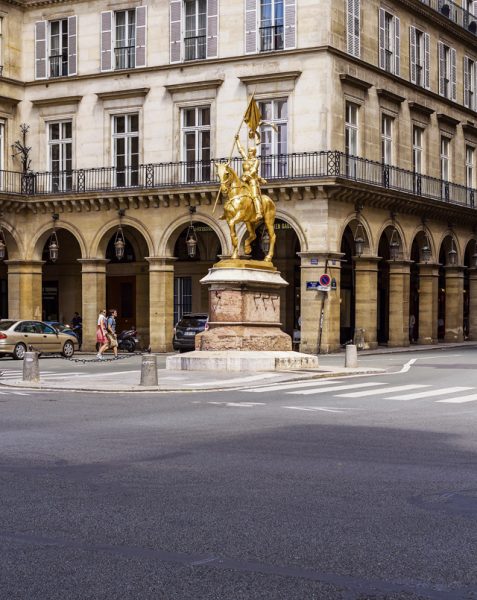
You’ve certainly heard of Joan of Arc, or Jeanne D’Arc, the famous and heroic woman also known as the “Maid of Orléans.” There are ballads, operas, rock songs, a ballet and even an epic movie paying tribute to the courageous young woman who stood her ground six hundred years ago.
But did you know that Jeanne was born in the small village of Domrémy in the Meuse Valley, now in the Vosges in the Lorraine region? It is just a two-and-a-half-hour drive away from the Kaiserslautern Military Community.
Jeanne was born on or about Jan. 6, 1412, as a peasant girl who couldn’t read or write, but had complete faith in her visions. Her parents were Jacques d’Arc and Isabelle Romée. She had three brothers and a sister. Her father was a peasant farmer with about 50 acres of land, and he supplemented the family income as a village official, collecting taxes and heading the local watch.
Jeanne was born during the Hundred Years’ War between England and France, which had begun in 1337 over the status of English territories in France and English claims to the French throne. Nearly all the battles had taken place in France, devastating its economy. At the time of Jeanne’s birth, France was divided politically.
Jeanne came to be known as being rather rebellious and when she was 13, she began envisioning herself leading France to victory over England. At the young age of 16 she refused to engage in an arranged marriage and instead set out on a mission to depose the English King Henry VI and install French prince Charles of Orléans as its rightful king.
She cut her hair, learned to skillfully handle a sword and ride a horse. She put on warrior’s armor, gathered followers and led several successful assaults against the English in 1429. She was soon in charge of troops and had a clever strategic mind, but it is said that she never actively participated in combat.
Nevertheless, she became a hero for her strategic planning and bravery, her forces grew and Charles took the crown. In 1430 she was captured by Anglo-Burgundians and charged with 70 crimes, including witchcraft and cross-dressing. Tragically, May 30, 1431, she was burned at the stake in the city of Rouen.
July 6, 1456, the sentence was revoked and she was declared innocent of heresy, while more than 460 years later she was also declared a saint. The village, originally named Domrémy, has since been renamed Domrémy-la-Pucelle after Jeanne’s nickname, la Pucelle d’Orléans (“the Maid of Orléans”).
From 1871 to 1918 the Alsace and Lorraine region belonged to the Prussian Empire and led by Emperor Wilhelm I. The French départements Bas-Rhin and Haut-Rhin were renamed Lower and Upper Alsace. After World War I the region was returned to France, then ruled as a separate French département until 1945. Due to its special historic situation, many Alsatians speak German or a dialect thereof until today and are well known for their specialties, such as tarte flambée, tasty wine and colorful pottery.
Domrémy-la-Pucelle is a picturesque town where visitors can view Jeanne’s birth house and the museum Centre Johannique is proud to display statues and documentation about its most famous and brave citizen.


